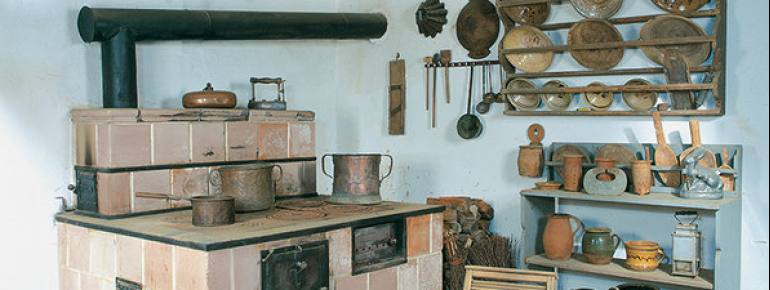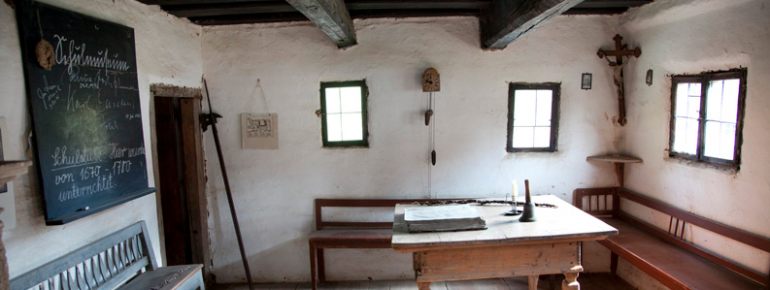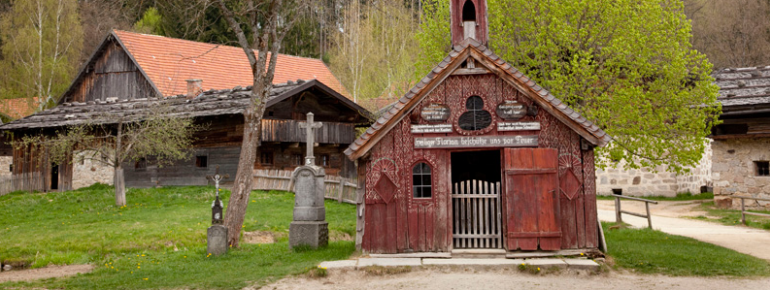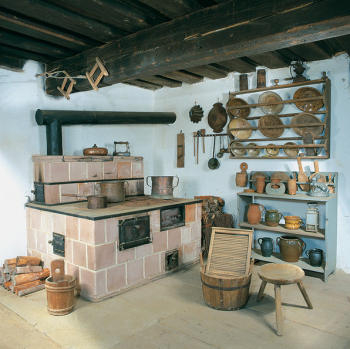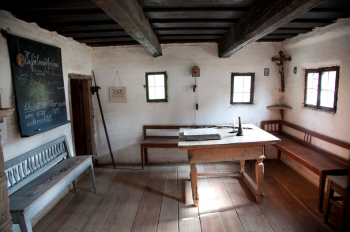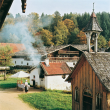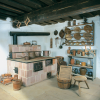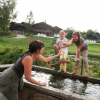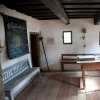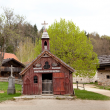Contents
Description
Whoever visits the Museum Village Bavarian Forest experiences a journey into the former reality of life of the inhabitants of the Bavarian Forest. Old farms dating from the 17th to 19th centuries are faithfully reproduced and can be visited, as well as all the other buildings that a village of the time usually had, such as chapels, schools, mills or sawmills. The buildings are furnished true to nature.
Exhibition
In the museum village there is the largest folkloristic collection of the Bavarian Forest. In addition to religious folk art, furniture, ceramics, household goods, clothing and agricultural implements and tools are exhibited. There is also an exhibition specially designed for children.
Animals in the museum village
The museum village is also home to farm animals, which are particularly attractive to young visitors. The donkey, for example, is owned by the museum village because lynxes often roam the Bavarian forests. Once a lynx had captured a sheep of the museum village. The donkey is a particularly brave animal and ensures that lynxes no longer venture into the museum village.
During the summer the geese live in a stable and a pond in the village and like to be fed by the visitors. Among the chickens, chicken Berta enjoys particular fame, as she is often found at the museum shop, where she hopes to be fed by visitors. She even lets herself be caressed.
Events
The Museum Village also frequently hosts events such as craft demonstrations, devotions, joint hiking tours, family Sundays with a special programme or children's camps during the summer holidays.
Wining and dining
The physical well-being is also taken care of. Strengths can be found in Mühlhiasl, the museum inn. The Lötz glassworks is mainly used for larger events such as the annual cabaret days.
Historical Information
In 1973 the Hotel Dreiburgensee was opened next to the Museumsdorf. In the process, operator Georg Höltl discovered that a Rothaumühle mill over 500 years old was also located here. He had it restored and opened a museum of local history in 1974.
Emergence of the Museum Village Bavarian Forest
As a result, many locals wanted to sell old equipment, household goods, furniture, clothing and ultimately buildings to the Höltl family. Georg Höltl then made it his task to preserve the historical building fabric and collect historical objects. This is how the Museum Village Bavarian Forest was created after 25 years.
How to get there
By car:
Coming from the direction of Deggendorf, the museum village can be reached via the A3. Take the exit Aicha before the forest and follow the signs via Eging am See to Thurmansbang. From here the Museum Street leads to the Museum Village.
Coming from Passau, take the B85 to Tittling and from there take the Museum Street.
Parking is available in the museum car park directly in front of the entrance.


